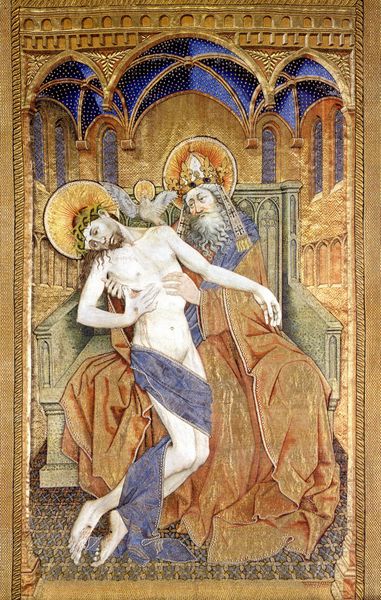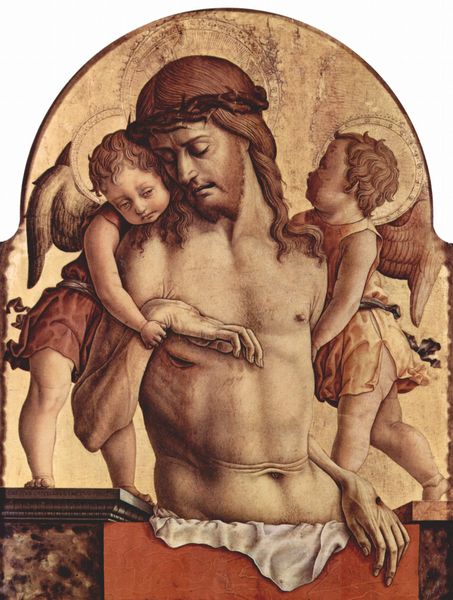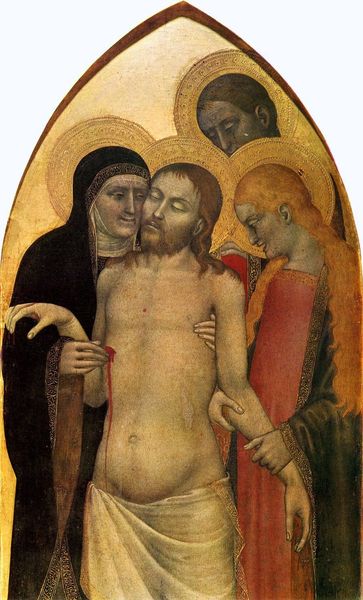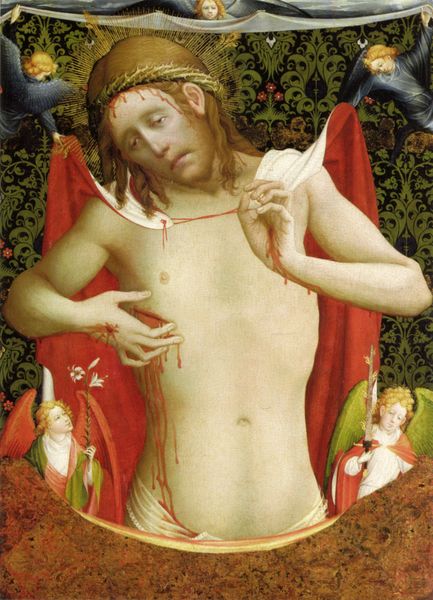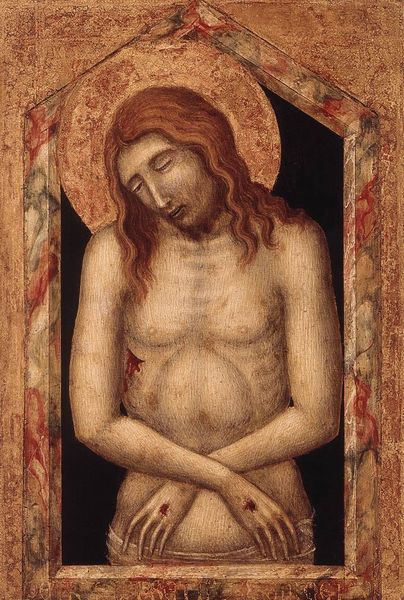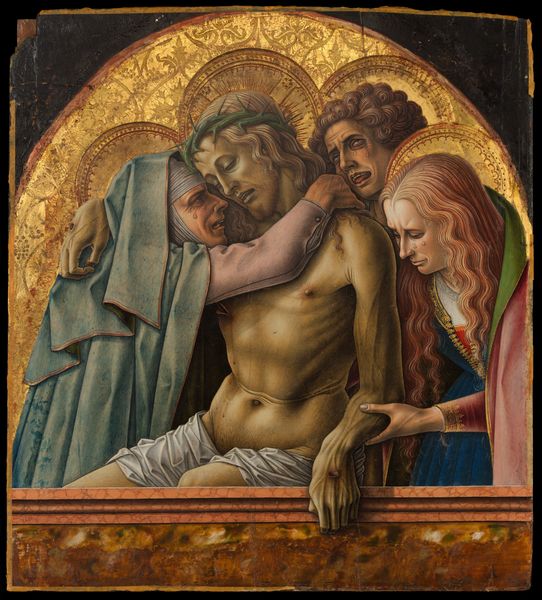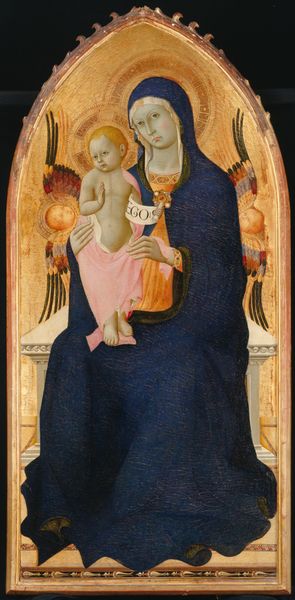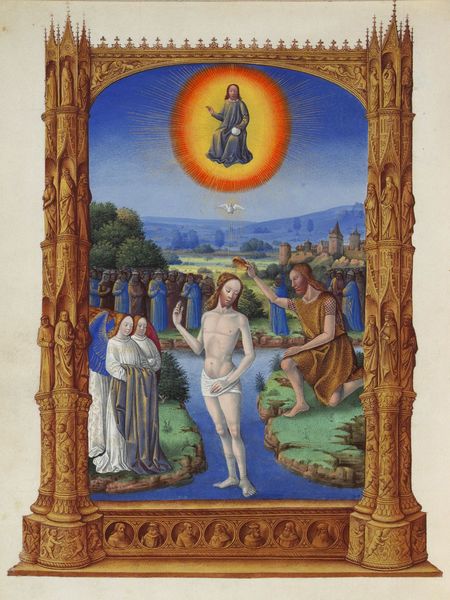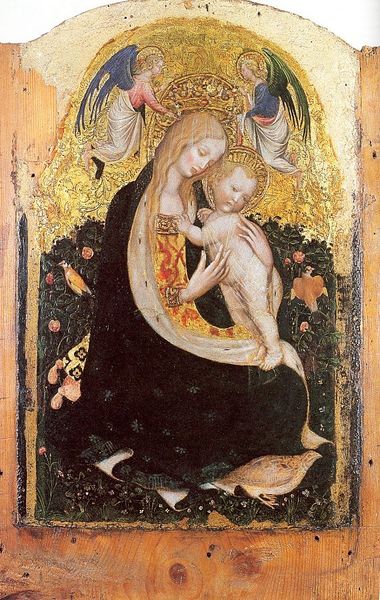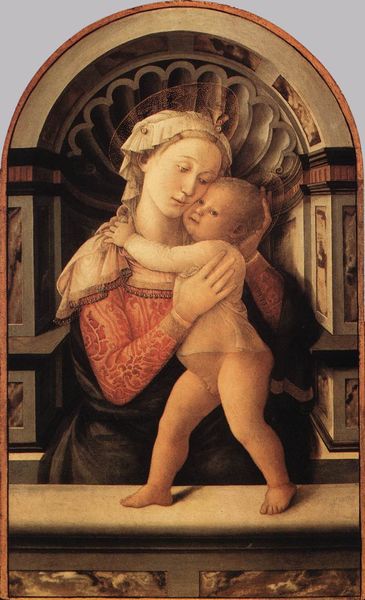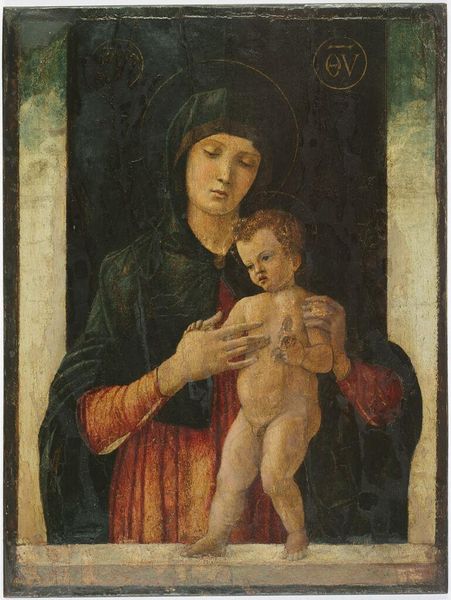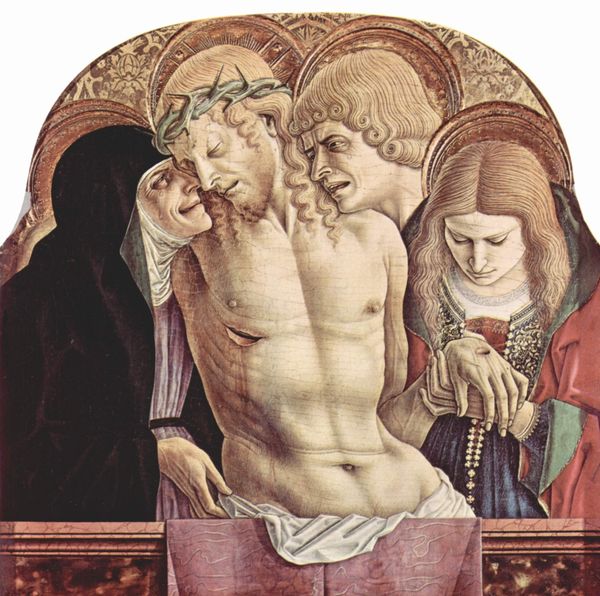
Vir Dolorum with the Arma Christi and angels. 1430
0:00
0:00
masterfrancke
Museum der Bildenden Kunste, Leipzig, Germany
#
possibly oil pastel
#
handmade artwork painting
#
oil painting
#
acrylic on canvas
#
coffee painting
#
underpainting
#
mythology
#
painting painterly
#
watercolour illustration
#
portrait art
#
watercolor
Copyright: Master Francke,Fair Use
Curator: This panel, entitled "Vir Dolorum with the Arma Christi and angels," was painted around 1430. It's currently held at the Museum der Bildenden Kunste in Leipzig and is attributed to Master Francke. The painting depicts a sorrowful Christ figure surrounded by symbols of his suffering. Editor: The immediate impression is one of visceral pathos, an almost unsettling vulnerability. Christ's sloped shoulders and downward glance certainly suggest profound dejection. The figures of the angels also carry a sad resonance, in their dark color choice and somber facial expression. Curator: Francke masterfully employed symbolism, as you'd expect. Each element of the Arma Christi—the instruments of Christ's Passion—are methodically incorporated to build a complete image of grief. Look at how an angel pierces Jesus, reopening wounds to present his agony. This, of course, resonates strongly within Christian theological symbolism. Editor: Indeed. The angels themselves, though standard features of religious art, feel quite specific here. With those intensely dark, raven-like wings, they represent more than just divine messengers. These winged guardians almost become personifications of pain and despair. It raises questions about the function of religious art in the socio-political climate. Were paintings like this simply devotional aids, or also reflections on societal suffering and injustice? Curator: It’s difficult to definitively ascertain the exact intent, but you can certainly argue it functioned on both those levels. Visual elements such as this crown of thorns are laden with collective pain. Francke has painted not just religious dogma, but tangible symbols to provoke feelings. These objects evoke a response and invite meditation on suffering throughout all history. Editor: What interests me is how a modern museum contextualizes this. How does it avoid perpetuating problematic interpretations, particularly regarding the body and sacrifice? And how has it evolved, say, from a private altarpiece to something consumed by a broader, less traditionally religious audience? Curator: I think that’s a crucial question. The piece’s aesthetic impact, regardless of any former political intent, certainly endures for a reason. The psychological effect, especially of the stark presentation of anguish, seems powerful across time and contexts. It's quite affecting and demands empathy, I believe. Editor: Yes, in that sense, these historical objects keep demanding responses from the people who inherit them.
Comments
No comments
Be the first to comment and join the conversation on the ultimate creative platform.
